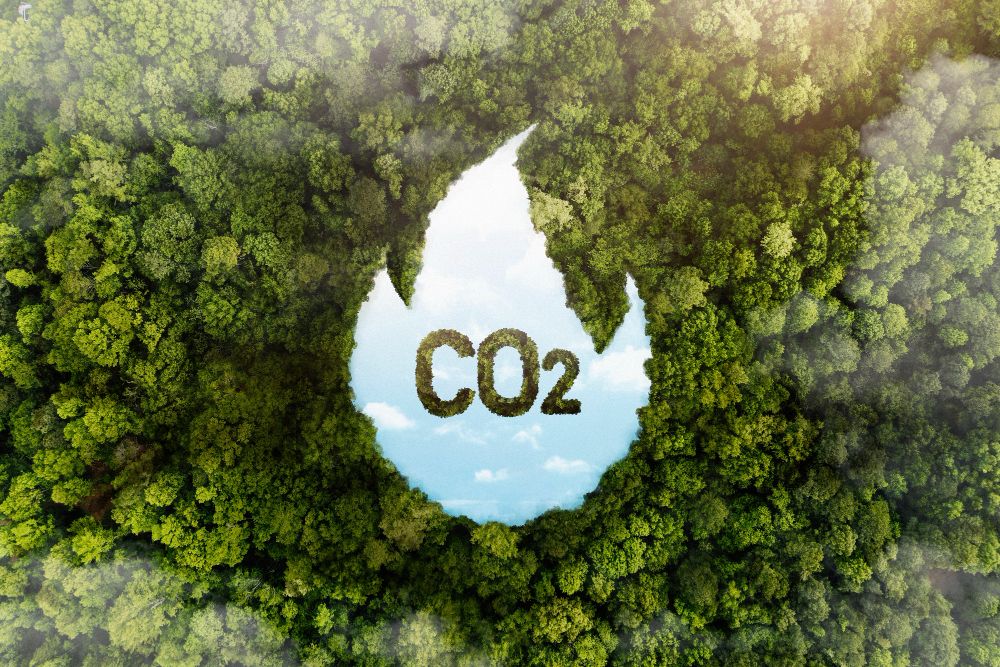In addition to the framework provided by the Paris Agreement and the UN Framework Convention on Climate Change, the European integration process is also a strong incentive for the development of Serbia's climate policy. Besides the undertaken international obligations, Serbia has a duty towards its citizens, since each year it encounters the effects of climate change, such as drought and flooding. It is therefore necessary to prepare appropriate measures as soon as possible.
With the ambition to position itself as a global leader in the fight against climate change, the European Union has defined the goals of reducing emissions of gases that cause climate change and instruments to achieve these goals, both for the near (2030) as well as the distant future (2050). By 2030, emissions of greenhouse gases should be reduced to 40% compared to 1990. The 2050 year's goals are even more ambitious, as emissions should be dropped by 80% to 95%.The central part of EU legislation in the field of combating climate change is the Directive on establishing a scheme for greenhouse gas emission allowance trading - the ETS Directive.1 It is a system of greenhouse gas emission trading (GHG2) covering more than 11,000 plants with high energy consumption and 45% emissions of greenhouse gases at the EU level. In addition, the Regulation on a mechanism for monitoring and reporting greenhouse gas emissions - MMR Regulation3 is also important. This Regulation defines the obligations of EU Member States to produce annual greenhouse gas emission inventories and to regularly report on their emissions and the measures taken to reduce them, which is particularly important given that EU member states have committed themselves to this as signatories to the UN Framework Convention on Climate Change.
A Hard Task
Serbia is expected to achieve the pace that the European Union has set in the fight against climate change through the transposition and implementation of legislation covered by Chapter 27 - Environment and Climate Change. That is not an easy task, given the low ambitions of the climate policy here, the high carbon intensity and the dependence of the economy on fossil fuels. Serbia has already taken some steps to fulfill this task. The National Strategy for Approximation in the Environment of the Republic of Serbia, adopted in 2011, envisaged the adoption and application of the provisions of the ETS Directive. Taking into account the complexity of the implementation of this Directive, a five-year deadline (which expired in 2016) was set. In the period from 2012, the relevant ministry has carried out two projects in order to prepare the ground for the transposition of EU legislation in the field of climate change.
Within one of them, the Draft Law on Reduction of GHG Emissions was made, which should have enabled the establishment of a system of trade in emissions in Serbia. The adoption of this law was envisaged by the end of 2017. However, this did not happen. Subsequently, the plans for the transposition of EU legislation envisaged the adoption of the Law that would translate the MMR Regulation into domestic legislation during 2018. In the latest version of the National Program for the Adoption of the Acquis, there is no Law on GHG emission reduction. Instead, a Draft Law on Climate Change was made, published mid-March, when a public debate was opened.
Waiting for a Public Debate to End
However, the Draft Law, which has been long awaited, leaves many doubts about the further development of Serbia's climate policy. First of all, based on the content of the legal provisions, the impression is that road and air transport are the largest sources of GHG emissions. The sectors to which the provisions of this law apply will not be defined (except for the two mentioned above). The Draft Law does not include provisions that are harmonized with the ETS Directive.1 Instead, there is an explanation why, despite many years of preparation, this is not possible yet. There is no plan or timeframe in which the economy will be given the opportunity to comply with the ETS provisions in the context of EU membership. Any postponement of work on the establishment of this system creates a suspicion that our economy and the energy sector will be ready to trade emissions before the date of joining the EU, which entails financial consequences. Surprisingly large number of key issues for reducing GHG emissions and adapting to altered climatic conditions are left by this Draft to the sub-legal acts, which are expected to be more than 20. In contrast, the Draft Law has established places for very detailed provisions that are, by their nature, regulated by sub-legal acts, such as the provisions on the availability and manner of displaying information on carbon dioxide emissions of new passenger cars, the content of promotional material, and the like. The Draft Law also envisages the adoption of the Low Carbon Strategy as an umbrella document that should offer a new direction for the development of our country.
In this regard, it is expected that representatives of all sectors of society, from agriculture to industry, from state and local government, through the scientific and professional public to the economy, civil society and local communities, will participate in the drafting of this document. The Draft, however, does not specify clearly the sectors to which the Strategy will relate to, and for those who should participate in the development of the Strategy, very little time was left for this serious job (if they are recognized as relevant in the development of the Strategy at all).
Only one year is foreseen for the completion of the Strategy, while only 30 days are left for the public debate on the Strategy. Penal provisions of the Draft Law refer primarily to administrative oversights, while the penalties for exceeding GHG emissions by operators are not foreseen.
At first glance, it seems that the existing Draft Law on Climate Change will not be able to respond to the challenges that climate change puts before us, and even those that the EU accession process carries. What is left for us is to wait for the text of the Law to go through the process of public debate and to hope that it will still contain key provisions that will really enable the achievement of the objectives of the Law - reducing GHG emissions and adapting to the changed climatic conditions.
Written by:
Ognjan Pantić, Belgrade Open School
Mirjana Jovanović, Belgrade Open School
This piece was published in the XXXVI issue of „Let's Talk About Negotiations“ Bulletin, which you can access here.
________________________________________
1 Directive 2003/87/EC of the European Parliament and of the Council of 13 October 2003 on establishing a scheme for greenhouse gas emission allowance trading within the Community and amending Council Directive 96/61/EC
https://eur-lex.europa.eu/legal-content/EN/TXT/?uri=celex%3A32003L0087
Photo credits: Freepik
2 GHG - Green House Gases
3 Regulation no. 525/2013 of the European Parliament and of the Council of 21 May 2013 on a mechanism for monitoring and reporting greenhouse gas emissions and for reporting other information at national and Union level relevant to climate change and repealing Decision No 280/2004/EC
https://eur-lex.europa.eu/legal-content/EN/TXT/?uri=celex%3A32013R0525

